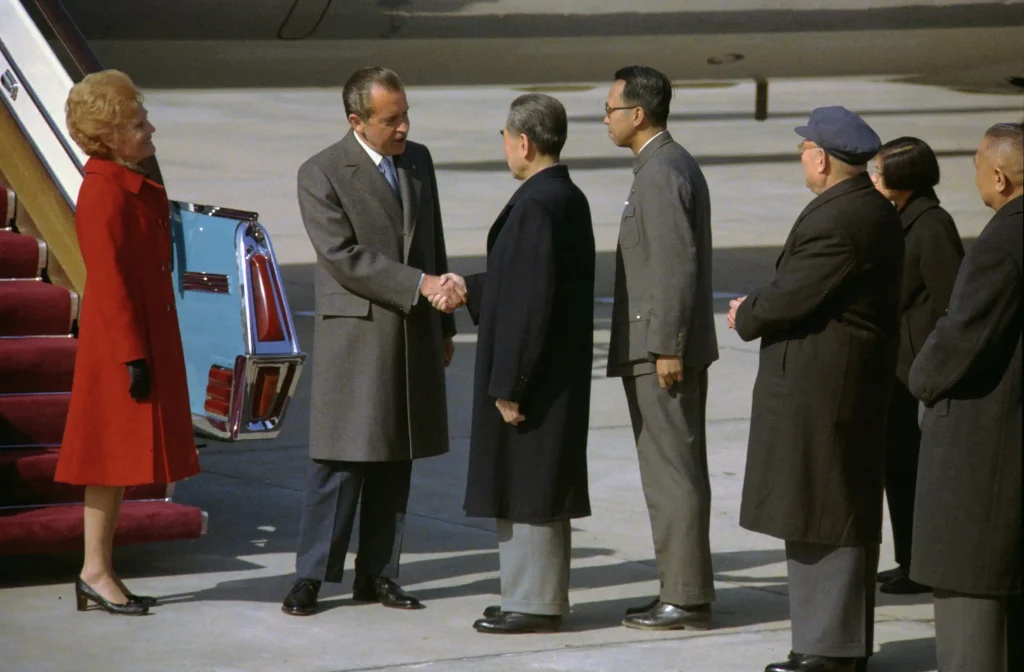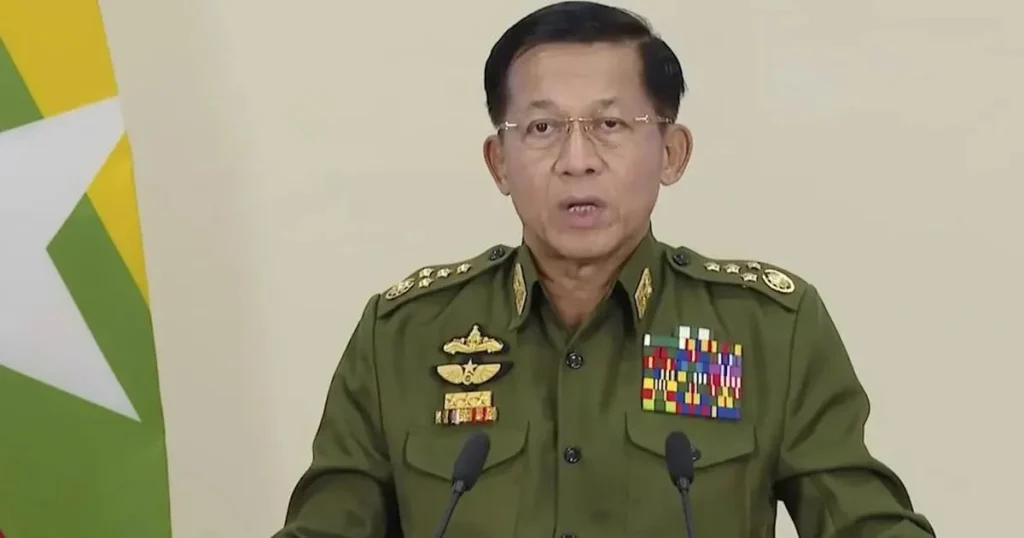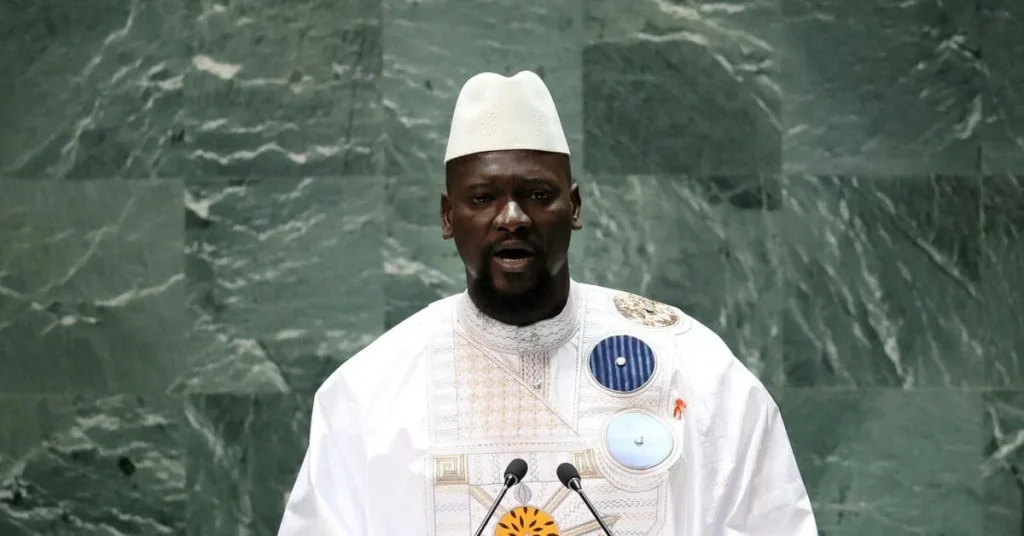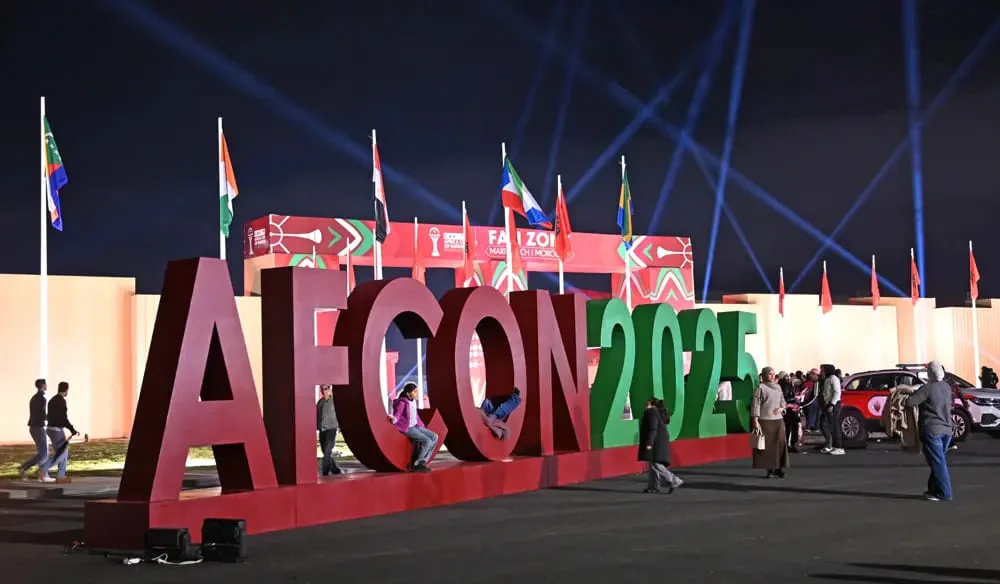On February 21–28, 1972, U.S. President Richard Nixon’s historic visit to China reshaped global geopolitics, forging a strategic U.S.-China partnership to counter Soviet influence.
The visit, facilitated by secret diplomacy from 1969, led to intelligence-sharing on Soviet troop movements via Chinese listening posts in Xinjiang, deterring Moscow from attacking China.
This cooperation, detailed in a 2022 podcast by Jane Perlez, culminated in Chinese leader Deng Xiaoping’s 1979 visit to the CIA’s Langley situation room after diplomatic ties were formalized.
The move was partly U.S. retaliation for Soviet President Nikita Khrushchev’s 1963 refusal of a joint U.S.-Soviet operation to destroy China’s nuclear program, as reported by the South China Morning Post in 2010.
Khrushchev dismissed China’s nascent nuclear efforts—successful with its 1964 test—as non-threatening, rebuffing a U.S. proposal on July 14, 1963.
Cold War Realignment
The Sino-Soviet split, evident by 1961, created an opportunity for Nixon’s détente, formalized in the Shanghai Communiqué, which acknowledged Taiwan as part of China while promoting peaceful coexistence.
Russia, feeling betrayed, abandoned plans for a nuclear strike on China, as confirmed by declassified U.S. documents.
This paved the way for U.S.-Soviet arms control, with the SALT I Treaty (1972) limiting missile systems and the START talks (1982–1993) reducing warheads.
By 1991, the Soviet Union’s collapse left Russia with the former USSR’s 35,000 nuclear warheads, though Ukraine, Belarus, and Kazakhstan transferred their inherited arsenals to Russia under the 1994 Budapest Memorandum, ensuring their non-nuclear status—until 2022.
Belarus’ Nuclear Shift
On February 27, 2022, Belarusian state media Belta reported a referendum amending the constitution to abandon its non-nuclear status, allowing Russia to deploy nuclear weapons on Belarusian soil.
The move, orchestrated by President Alexander Lukashenko, coincided with Russia’s invasion of Ukraine and Vladimir Putin’s order to place nuclear forces on high alert, citing Western sanctions like SWIFT exclusions.
EU foreign policy chief Josep Borrell condemned the “fake referendum,” warning, “We know what it means for Belarus to be nuclear… This is a very dangerous path.”
By June 2023, Russia confirmed deploying tactical nuclear warheads to Belarus, escalating tensions amid NATO’s expansion and Ukraine’s resistance, supported by Turkish drones and Western arms.
Ukraine Crisis and Nuclear Risks
Putin’s nuclear alert, the first since the Cold War, responded to sanctions crippling Russia’s economy, including a 30% ruble collapse.
Ukraine’s Foreign Minister Dmytro Kuleba vowed, “We will not give up a single inch,” as talks in Belarus yielded no ceasefire.
The conflict, displacing over 350,000 by February 28, 2022, echoed broader global crises, from the IPCC’s climate warnings to Myanmar’s refugee exodus.
Posts on X in 2022 decried Lukashenko’s alignment with Moscow, with some calling Belarus a “Russian satellite.”
The nuclear escalation revived fears of a Cold War-style standoff, with Russia’s 6,000 warheads and NATO’s collective arsenal heightening risks.
Lasting Legacy of 1972
Nixon’s China visit not only prevented a Sino-Soviet nuclear conflict but also set a precedent for triangular diplomacy.
By 2022, U.S.-China relations had soured, with tensions over Taiwan and trade, yet the 1972 framework enabled cooperation like intelligence-sharing until the 1980s.
The Belarus development, alongside Iran’s nuclear talks stalling in Vienna, underscored ongoing nuclear proliferation challenges.
As global crises—from Covid-19’s 400 million cases to Ghana’s Olympic successes—converged, the 1972 détente’s legacy highlighted the delicate balance of power in averting nuclear Armageddon.






